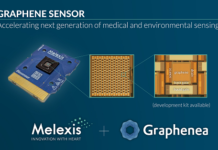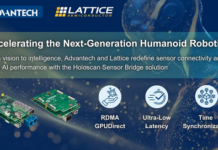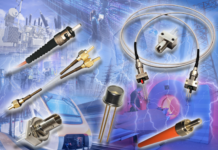
As a leading infrared technology provider for space applications, LYNRED has created the first infrared sensor specifically designed for groundbreaking meteorological sounders, enabling immediate forecasting of extreme weather events and climate monitoring in Europe and beyond. The InfraRed Sounder (IRS) satellite was launched into orbit on July 1.
LYNRED, a global leader in infrared (IR) imaging technologies, announces that two completely new products, IRS MW-IR and LW-IR, have just been launched today by taking off to space. These two space qualified sensors are specifically designed for sounding applications within the infrared MWIR to VLWIR spectral range. They will play a crucial role in the Meteosat Third Generation Sounder mission (MTG-S1), that took off from Cape Canaveral, Florida on July 1, 2025 at 5.03 p.m Eastern Day Time (11.03 p.m. Central European Time). The MTG-S1 satellite carries two key missions: the Infrared Sounder (IRS) and the Copernicus Sentinel-4 Ultraviolet-Visible-Near-Infrared light imaging spectrometer (UVN), now on their way to their positioning 36,000 km above Earth.
The MTG system is the most complex and innovative geostationary weather satellite system ever built. The main objective of the MTG-S (Sounder) mission is to enhance Numerical Weather Prediction (NWP) capabilities at regional and global scales. The IRS will be the first European hyperspectral infrared sounder instrument in geostationary orbit.
Its predecessor, the Meteosat Second Generation (MSG), featured an IR imager only. The MTG-S1 however incorporates the innovative IRS sounder, equipped with two detectors: the LYNRED staring array IRS-MWIR and the LYNRED staring array IRS-LWIR (160 x 160 – 90μm pitch). This new generation of meteorological sounders utilizes cutting-edge infrared detectors developed as part of a world-class Earth observation program in collaboration with European partners, addressing major scientific and societal challenges.
Unprecedented performances for space sounding applications
The IRS detector, based on LYNRED’s space-proven MCT technology, is a one of its kind worldwide regarding format and large spectral range with such a high cut-off wavelength, delivering exceptional performance for space sounding applications. Key features include:
- A definition tailored for Fourier Transform Spectrometry (FTS) sounding applications and related InfraRed Instruments (FTIR).
- A broad dynamic range suitable for the MWIR to VLWIR spectral range, extending up to 15μm.
- Proven technology that meets stringent operability requirements up to 15μm.
- High operability and outstanding radiometric performance (SNR).
The IRS is the first detector in the world to achieve this high resolution (160 x 160 – 90μm pitch) with an impressive spectral response cut-off wavelength of 15 µm.
The release of this advanced IR detector paves the way for developing a new generation of sounding instruments, offering enhanced performance, including improved spectral accuracy, higher ground resolution, and increased revisit frequency.
Philippe Chorier, Space Business Development Manager at LYNRED, stated: “The launch of the IRS satellite, equipped with the IRS MW and LW detectors, validates the availability of a new generation of IR detectors specifically designed for next-generation FTIR instruments in space sounding missions. This detector is truly unique worldwide, with characteristics such as format, pitch, dynamic range, spectral range and frame frequency that promise to usher in a new era of FTIR instrument capabilities for future sounding missions from 3 to 15 µm.”
More than 15 years of R&D led by the European Space Agency
LYNRED developed the IRS detector for both MW and LW bands in accordance with the specifications provided by Thales Alenia Space (France), responsible for the detection chain and overall satellite delivery. OHB-System (Germany) handled the instrument definition. This collaborative effort was managed by the European Space Agency (ESA), who oversees the space segment implementation of the MTG program for the benefit of EUMETSAT.
Sounding missions utilizing Fourier Transform InfraRed (FTIR) spectrometers require specialized infrared detectors capable of handling the unique demands of high-end space instruments. These include a wide dynamic range of flux across an extensive spectral range and the ability to operate at very high frame rates (typically exceeding a few kHz). Historically, constructing these instruments has been challenging due to the lack of suitable infrared detectors that meet the specific requirements.
Through the IRS MTG-S program, LYNRED has successfully developed a specialized IRS detector that meets the expectations of the addressed instruments, overcoming significant technical challenges to enable the design of FTIR spectrometers operating from 3 µm to 15 µm.
“We anticipate that the success of this collaboration will demonstrate the feasibility of a new generation of FTIR systems based on the IRS detectors developed for the IRS MTG-S program, with plans for these detectors to be utilized in numerous future sounding systems.” concluded Philippe Chorier.
A significant step ahead for climate monitoring
The IRS will offer a dynamic view of the atmosphere above the Earth. Scanning Europe every 30 minutes, it will collect vertical temperature and humidity profiles with unprecedented accuracy. The data will enhance forecasting of atmospheric instability, water vapor movement, and extreme weather events such as heavy rainfall, tropical cyclones, and winter storms.
The combination with imaging satellites will make it possible for the first time to observe the full lifecycle of a convective storm from space. It will revolutionize weather forecasting and climate monitoring in Europe, and beyond.
For more information visit www.lynred.com.
















